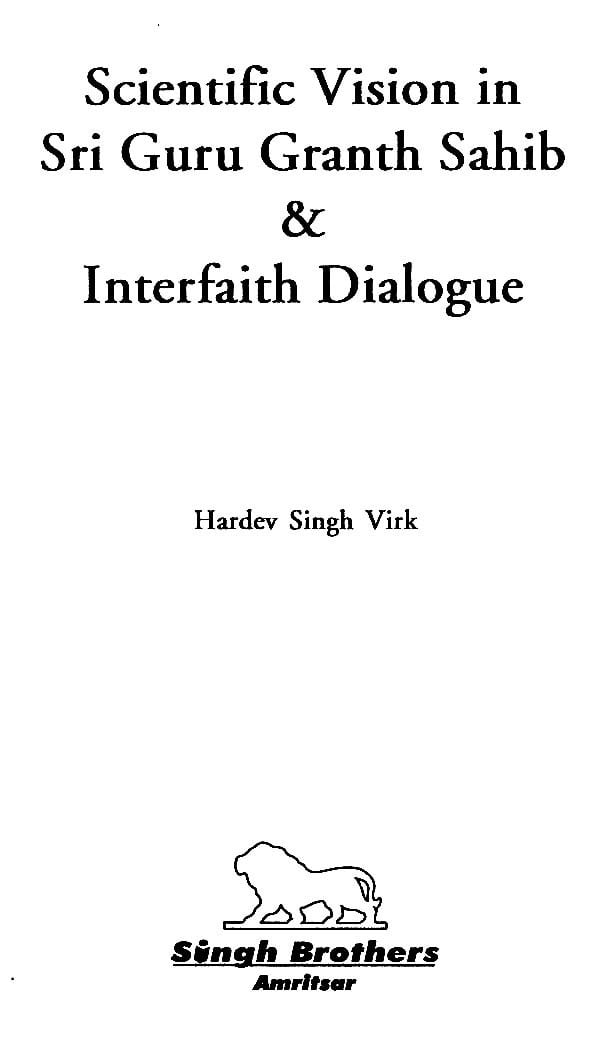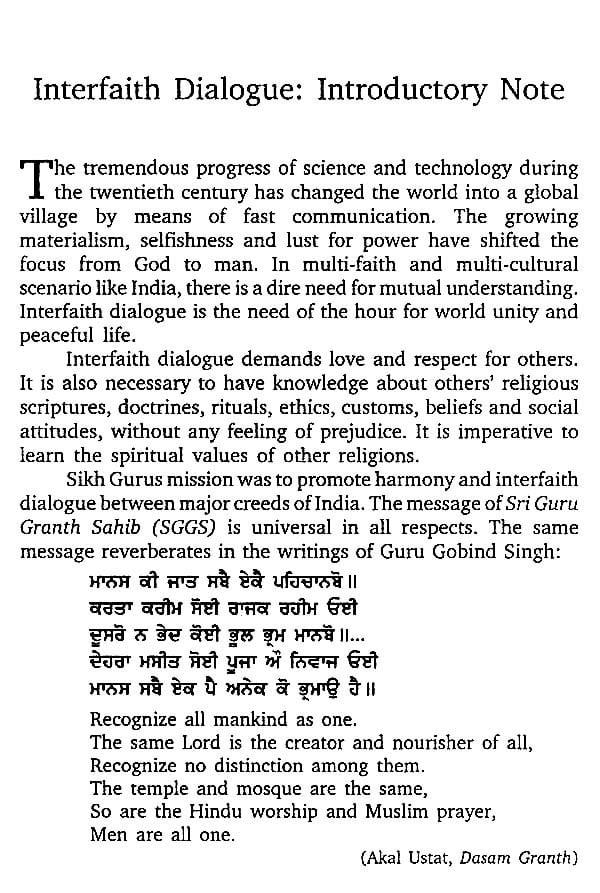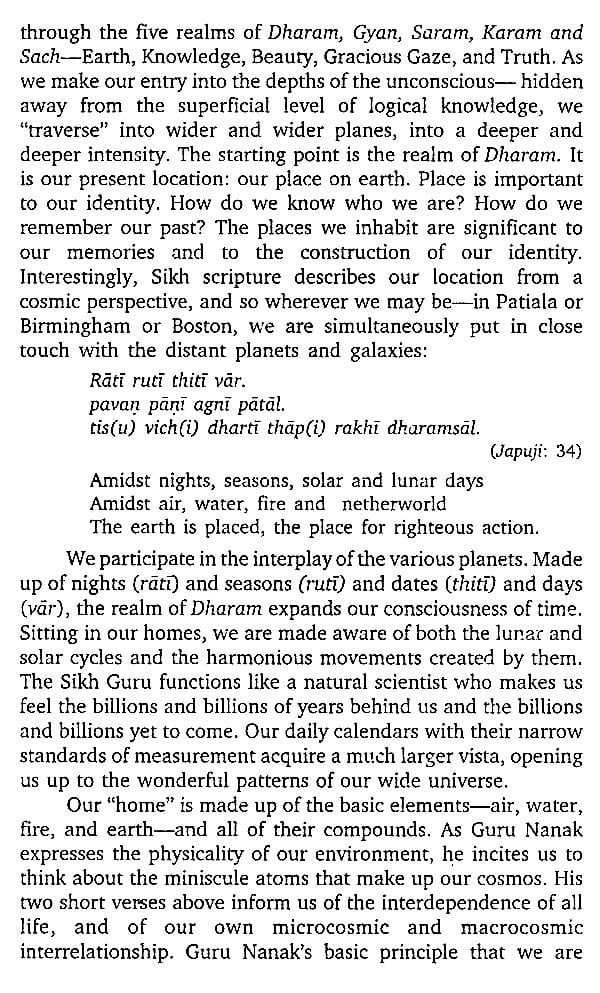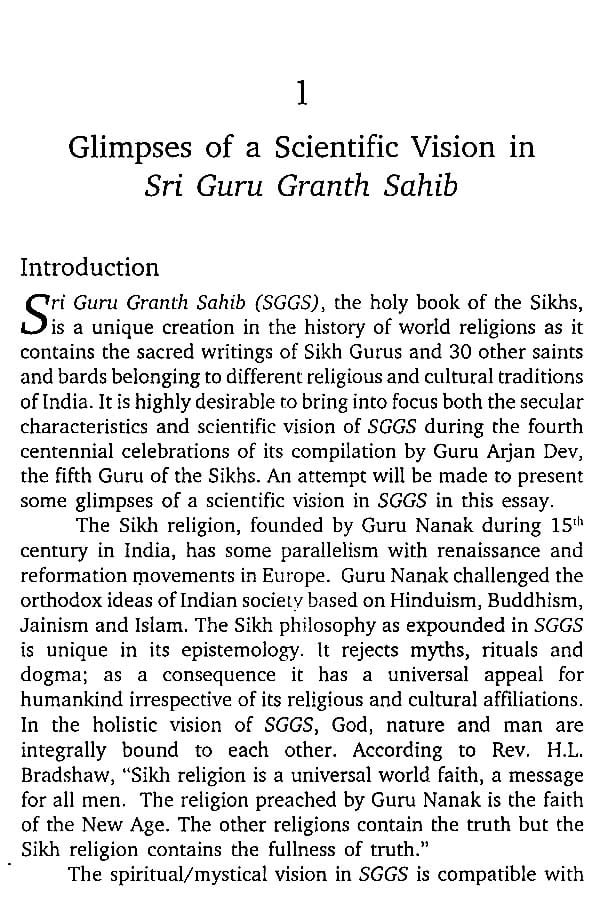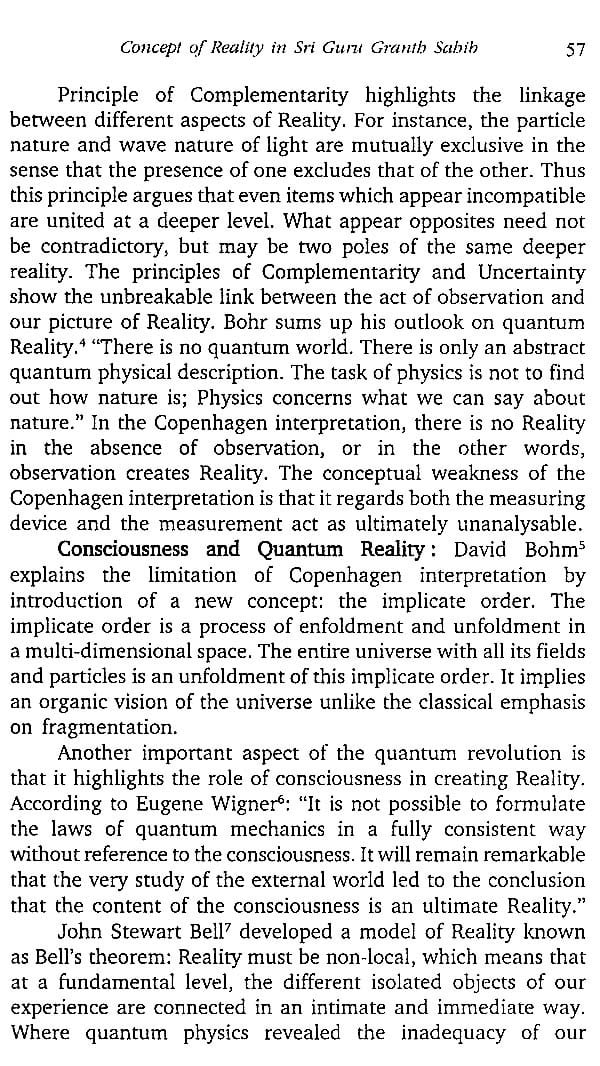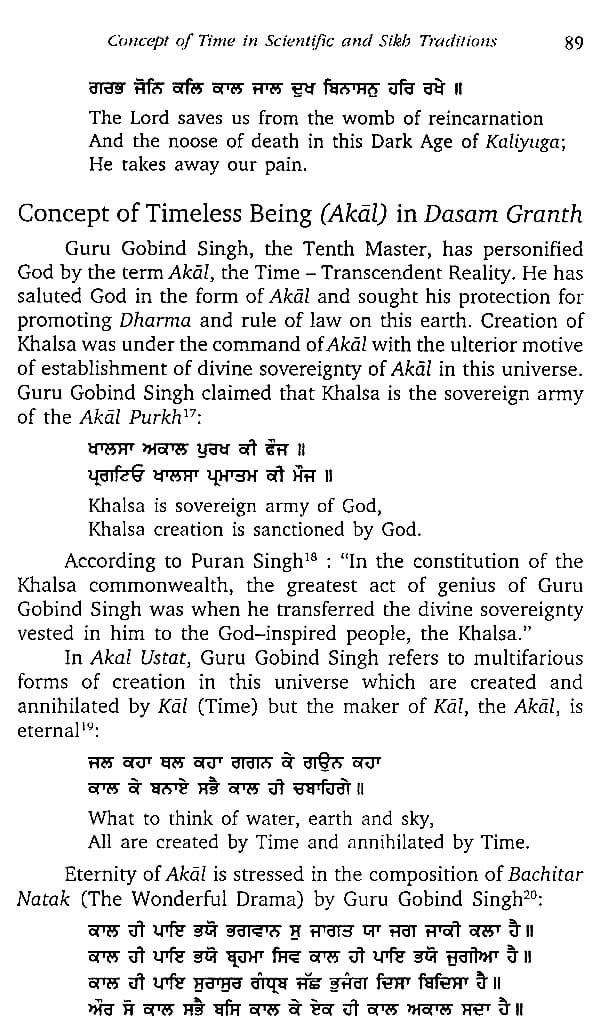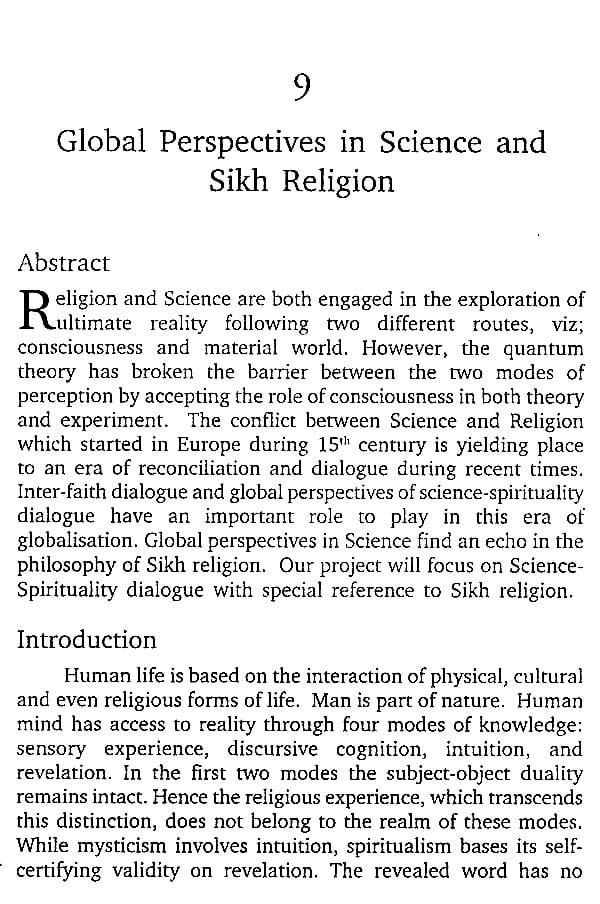
Scientific Vision in Sri Guru Granth Sahib & Interfaith Dialogue
Book Specification
| Item Code: | UAZ960 |
| Author: | Hardev Singh Virk |
| Publisher: | Singh Brothers, Amritsar |
| Language: | English and Punjabi |
| Edition: | 2007 |
| ISBN: | 9788172054007 |
| Pages: | 156 |
| Cover: | HARDCOVER |
| Other Details | 8.80 X 5.80 inch |
| Weight | 320 gm |
Book Description
The SGGS thus serves as a treasury for the physicist, geologist, chemist and biologist alike and with their own and indeed different expertise, the natural scientists can tap into its inexhaustible wealth.
Indeed a scientific perspective is conducive to and valuable in comprehending the scope of the vision of the Sikh Gurus. Starting with the founder Nanak, the Sikh Gurus have communicated the beauty and vastness of the cosmos in sublime poetry. Their verse is suffused with the wonder of the infinite, and consequently, Waheguru has become the most popular Sikh expression. Typically it is scholars in the fields of literature, philosophy, and history who undertake an analysis of Sikh scripture, and with the inclusion of scientists, physicists, astronomers, chemists, geologists, biologists, the exegesis of the text is only enhanced. For instance, Guru Nanak's words "pātālā pätal lakh ägäsä ägas-worlds below worlds, worlds above worlds" (Jap ji. 22) leave us wide-eyed, but they acquire a real palpability and concreteness when we look at them through an astronomer's telescope. As we apply the empirical data of our Milky Way galaxy with its hundred billion stars and the scientific observations regarding billions of other galaxies, we really begin to visualize what Guru Nanak meant, and thereby gain a fuller understanding and appreciation of his verse. The scientific adventure, its observations, and factual data, do not clash with Sikh sacred scripture; they reveal its intrinsic vigor, its far-reaching insights, and its contemporary relevance. Professor Virk's interpretation of Sikh scripture in light of scientific theories of evolution, cosmology, nature of reality, and time are therefore most fitting.
If we look closely, the passionate poetic discourse is very much like the scientific approach in that it fosters curiosity and inquisitiveness. The Guru-poets do not impose any theories on us. They do not preach at us. They do not lay out any fixed systems. They do not delineate any obligatory rules. They do not draw up a list of "do-s" and "don'ts." There is no authorial figure or doctrine that we must submit ourselves to. To the contrary, the Guru Granth subtly trains us to become epistemologically open-minded and discover new tracks. If we were to focus just on the Japuji, the opening hymn of the Scripture, we quickly realize that its style forces us to make minute investigations. For instance, stanza 21 raises questions about our primordial origins:
What was the time, what was the hour, What was the date, what was the day, What was the season, what was the month, When creation was born?
Guru Nanak's questions are keen, and their pacing is quick. With such microscopic distinctions regarding time, hour, date, day, month, season, he provokes us to recollect our origins and really investigate our place in the universe. His exciting questions enter contemporary scientific debates about the origins of our universe: What are we? When did it all begin? How did we all evolve? The Guru mentions that even in his time, scholars were offering their own answers. But the Guru challenges all presuppositions about the workings of the universe. He accepts no theories nor presumes any knowledge himself. As Dr. Virk rightly observes, Guru Nanak "is in tune with the latest scientific Guru Nanak gives no answers; he simply incites us to examine deeply about creation: "The creator who designed this creation alone knows" (Japuji: 21). Devotees and scientists are equally welcome to the exhilarating challenges that lie ahead in our quest.
**Contents and Sample Pages**
